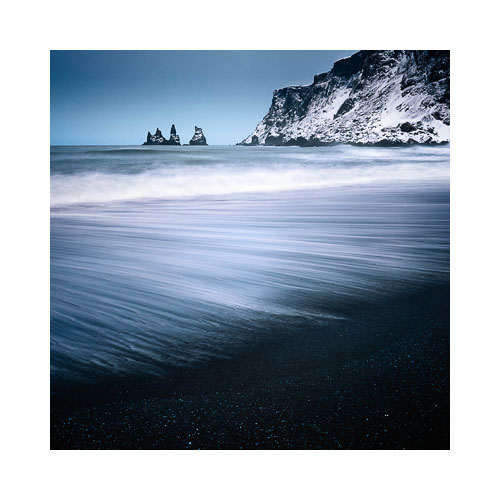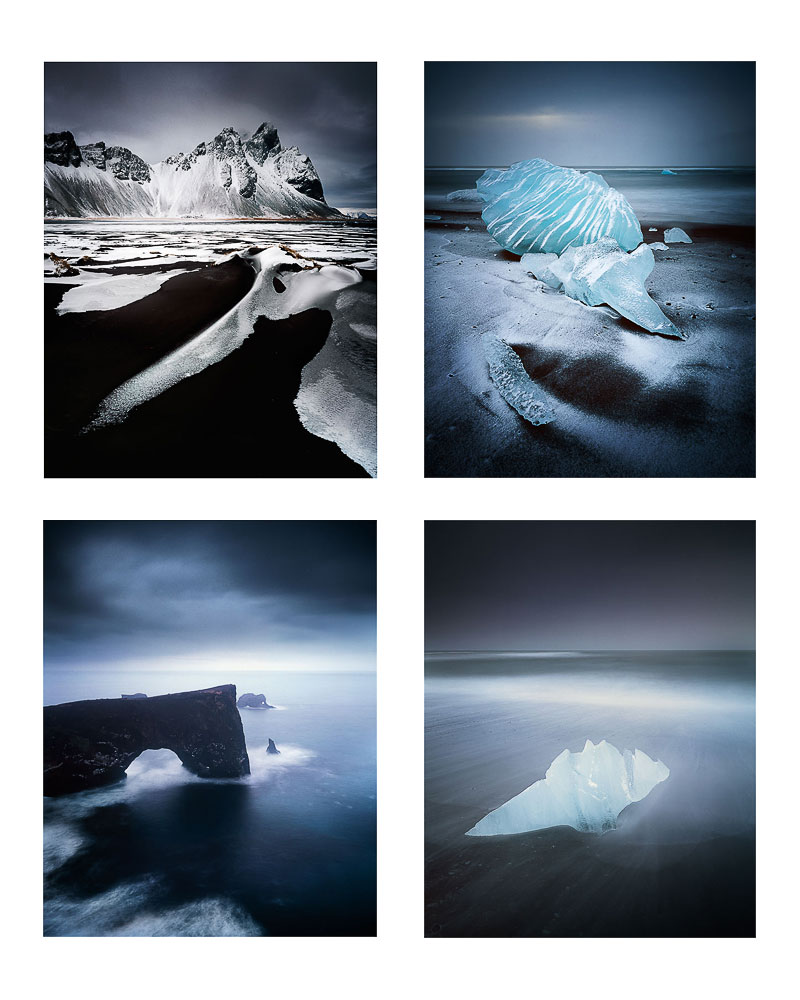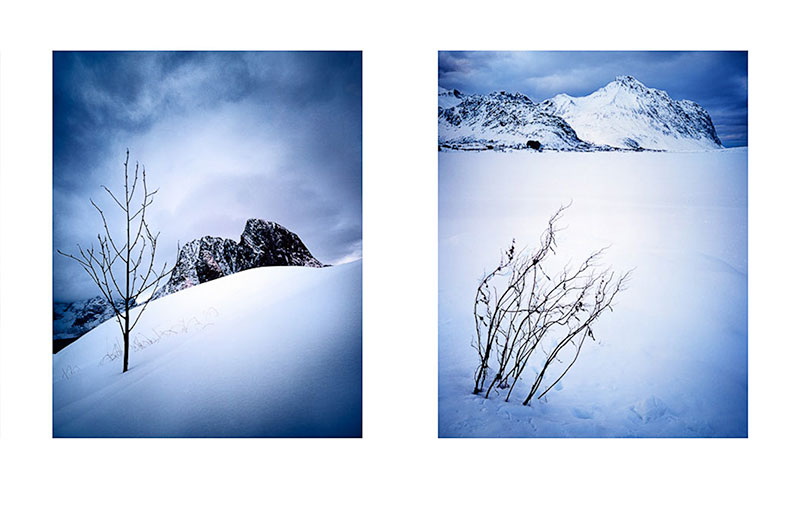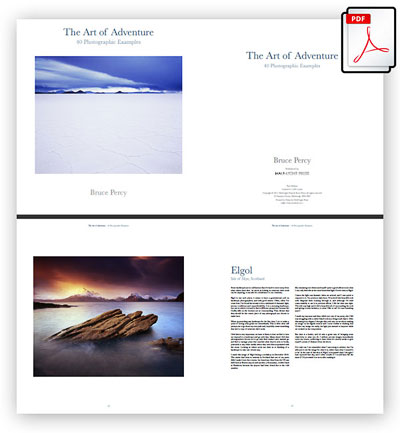So much talent, for such a small country
I'm in Reykjavik this week. I've just been to a local record store - 12 Tonar, which is no ordinary record store. It is also a music label for upcoming Icelandic musicians and bands.
I've just had the most inspiring afternoon in there. Firstly, the guy who runs the store has little CD players all over the place, and you're encouraged to just pick up an album and put it on and listen. Needless to say, I've just left the store with around six CD's of music that sounded really wonderful to me.
https://www.youtube.com/watch?v=jJlPLOJxAbs&width=400
What I would like to know is, why has such a small country - with a population of around 330,000 people, have such an amazing array of musicians and bands? It seems I am hearing about new music from there almost every week.
What is it about Iceland that the country is producing such an array of music?
I would love to think it's due to the landscape.
[vimeo 37124408 w=400]
I feel though, that it has more to do with the remoteness and identity of icelandic people. There is something very unique about Reykjavik. The downtown section of the 'city' (more like a rustic little town), has a vibe about it - it's very bohemian. It's like a place designed by artists, for artists to live in. Perhaps Iceland is a place for artists?
I wondered today, if I could live here. Being from Scotland, I find our winters pretty long..... and Iceland is one further step on from that. So I'm not so sure if I could do it. And this led me on to think about how where we are from, and what we experience in terms of climate, can shape and mould us.
I know for sure, that Scotland has moulded who I am. So I know that growing up and living in Iceland would have certainly moulded the musicians here, and their music.
As a creative person, I'm aways wondering how much my photography would have differed, if I'd grown up somewhere else. Surely I wouldn't be the same person I am now? We are definitely a product of our environment.
Half concealed, half revealed
I love it when inclement weather hides part of the landscape.
Rain clouds came in today and hid most of the isle of Rum (the land mass you can see on the horizon) from view. For most of the morning it wasn't visible to us, and just as we were getting ready to depart for lunch, it decided to start showing itself to us.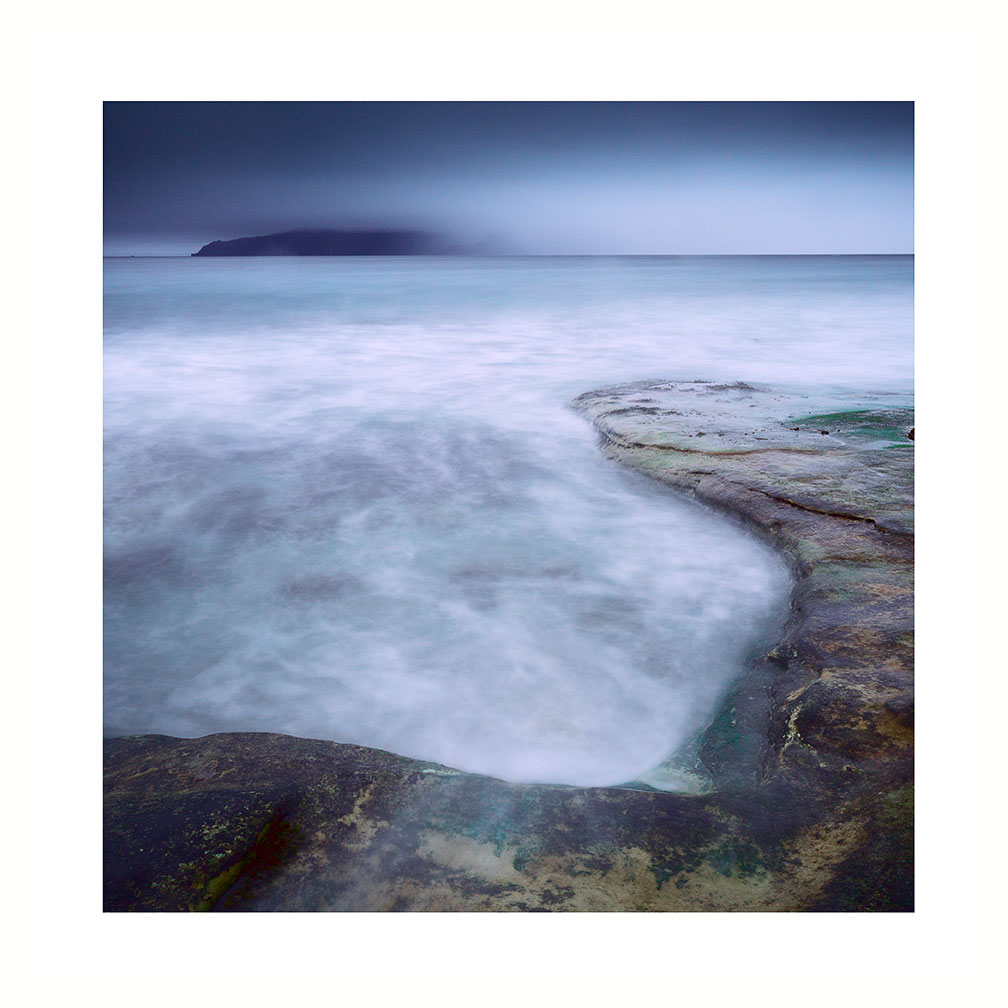
This is a digital file from the little Lumix GX1 camera with the 12-35 panasonic zoom lens. As I explained a while ago, I got this system for my workshops, so I could help explain compositional ideas to participants. As you may also know, I am really a film shooter and everything on this site has been captured with film.
It's nice to have such a little camera with me to illustrate and work on sketches. The thing is though, this kind of image is not one to go back to repeat (ideally, I would go back with my film camera to get this shot). The inclement weather provided a unique opportunity. As too, did the tides. My group spent a bit of time last night discussing how a landscape changes over a week. At the start of the week we had high tides, so many of the features of the landscape were hidden from us. I personally feel this is a good thing, as most beaches can be too busy with too many rocks competing for your attention. Towards the end of the week, the tide is lower and we are now finding other areas of the beach that we did not see on day one.
With this particular image, we ventured here at high tide. There is a lot of redundant rocks and kelp hidden under the water, which allowed this 'curve' to stand out. Normally, it wouldn't present itself as a possible composition option because of the 'noise' around it. But also, I feel this image wouldn't have presented itself because of the rain shower that managed to completely hide Rum on the horizon, and for a brief moment, revealed it to me.
Isle of Eigg, Lummix GX1 Style
This week i'm on the isle of Eigg with a group. We were out this morning shooting on Laig bay.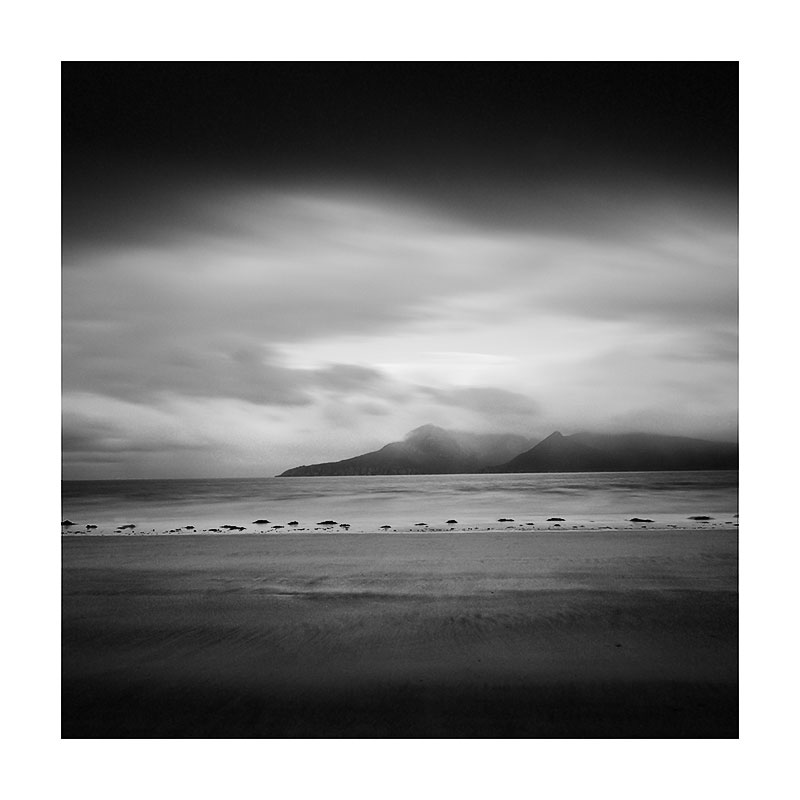
I've got my little Lummix GX1 system with 12-35 Panasonic lens and Lee Seven5 filter system with me, mainly for illustrative purposes. I made this little shot just before we headed back to the guesthouse for breakfast. I deliberately used a 3 stop hard grad on the top 1/4 area of the frame (to intentionally get a lot of burn-in into the image, and I composed it square at the time too (the Lummix is one of very few cameras that allows you to change aspect ratio - something I feel ALL cameras should offer as a matter of course). Aspect ratios are vitally important to how we see, compose and how we find images in the landscape, in the first place.
Anyway, I really wish I knew how to make the colours in digital 'sing' like my Velvia images do, but I've never been able to achieve it. I personally feel it's just not possible right now with the capture mediums as they are right now. But that's my own personal feeling and I know many will not agree with me. So I decided to opt for a black and white interpretation of the isle of Rum here, with a beach littered with evenly distributed kelp.
Approaching Silence
In my post from a few days ago, I suggested that as part of the 'searching' we do as photographers, we tend to make many interpretations of the same subject.

I love to do this even with subjects that, on the surface, seem to offer very little opportunity to do anything more, other than the obvious.
What may appear to need only one shot to covey a message, seems to spur me on to go looking for something more.
Take the images here of Laguna Colorada in Bolivia. One could be forgiven for thinking that there is possibly only really one image to be made here. There is no background or foreground subject matter and there are no interesting rocks to place in the foreground. So why would I shoot more than one 'interpretation' of it?
I believe the answer has to do with how we react to each image emotionally. The subject matter may be similar, but through variances in tonality and form, the emotional message is different.
I didn't need to change the composition too dramatically between both images. All I had to do, was watch and listen to the changes inside of me, as the light altered the landscape before me.
I could argue that having less material in front of my lens to shoot, made this a much simpler task to do. The less visual stimulation we have to process, the easier it is for us to notice changes, especially if they are small ones.
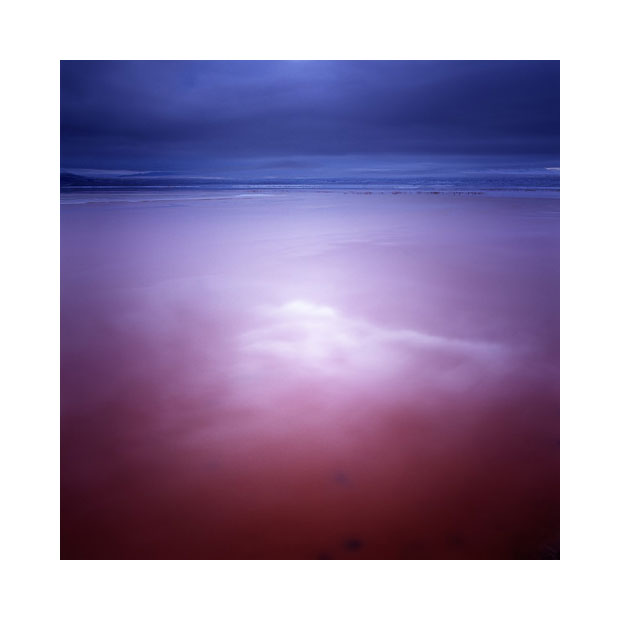
I was torn as to which image to choose as a candidate for the final portfolio. I decided to select both. Although to some, it may seem as though I have already told the story once, and need not do it again, the truth is that for me, both these images speak to me in different ways.
I believe that when we are making images of the landscape, our emotions tend to mirror the variances in light, shade and tone that we encounter. We are emotional beings and we are responding to our environment all the time. Light and colour are sounding boards, used to reflect back to us what we are feeling.
Some people talk about images being quiet, tranquil. Others will describe images as tense or relaxed. When we do this, we are essentially describing ourselves, how we feel as we respond to the work we are viewing. The photograph is not calm, you are. The photograph is not tense, you are. Good photographers know this deep down and they understand how colour and tone can be used to affect our moods and our feelings, just like a musician knows he can affect our moods by playing a minor or major chord.
For me, I felt I was trying to convey a sense of 'approaching silence'. Each iteration that I made whilst at the edge of this lake felt like an attempt to get closer to this notion. Ultimately, I was attempting to capture a mood, a feeling. Unwittingly, I was attempting to capture my very own thoughts.
Searching Laguna Blanca
As a landscape photographer, I believe that part of my nature is that of 'restless searcher'.
I know many people who have turned to photography, as a response to the routine in their lives. I will often hear clients tell me that they feel more alive, and in touch with nature through photography.
I think this is because routine tends to dull our senses. We stop noticing things because anything that does not change in our environment does not tend to stand out after a while. Routine seems to contain a lot of background noise - information that we do not need to process again and again, because we already know it.
Consider the commute to work, where you felt you were on auto-pilot. All you know if you got to your desk on time, but you can't specifically remember details of the journey any more, because, just like how you know which key to type on your keyboard, everything has become second nature. You have stopped looking.
I think that most people thrive on new stimulation. For example, one way to become stimulated is to go on holiday. Being in a new environment, with different sights and sounds can seem to awaken part of us that has been lying dormant while we go about the routines in our everyday lives. This awakening is something I think most of us find attractive about photography, because the very act of making a picture forces us to engage in our surroundings in a way that we normally wouldn't. I think this is why I often hear participants on my workshops tell me it takes them a day or two to get their 'vision' working - they're out of practice, because the routine of their lives does not require such intense processing of their visual surroundings anymore.
In this way, making images with a camera isn't really about making images at all. I think it's more a vehicle that encourages us to engage with our environment. Give someone a camera and they will go looking. Or more specifically, they will go searching. A camera is a baton, a symbol that says 'now I must open I eyes and go see, look, find, enquire, engage'.
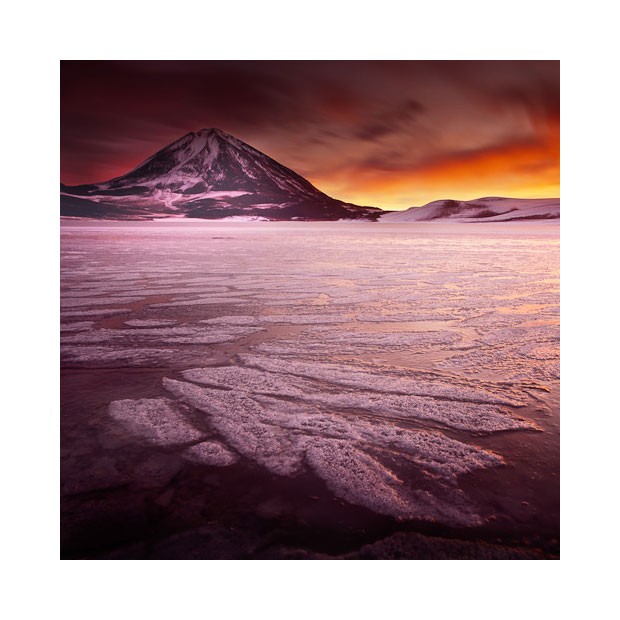
I had a client a year or so ago, who expressed his view that we should try to avoid routine in our lives - even in the smallest of ways. He would for instance, take different routes home in his car each day from work, so that he was able to think more. Or if he was walking, he would deliberately leave his office and make up his journey home. He wouldn't look at a map or plan his trip. He would simply go, and see what he would come across as he made his way from one side of Philadelphia to the other. During the workshop, he was keen to encourage the group to choose different seats each day. As much as this seems perhaps a bit eccentric, I can fully appreciate what he was doing. He was trying to reduce the level of routine in his life because it allowed him to engage more.
I've been looking at these three images the past few weeks since I worked on them. Essentially the same location, same volcano in the background - Licancabur - just on the border between Chile and Bolivia. I could have shot this scene once and decided that there was little point in making another image of it . But as you know, we don't tend to do that as photographers. We will often shoot the same subject again and again. Sometimes it's because we don't think we quite 'got it', and other times, it's because we're still noticing things about the landscape and recomposing to take into account the new information we have at hand.
In my own case, these three images came about because of two things: firstly, my awareness of the colour temperature, and secondly, my awareness of foreground subject matter.
With regards to colour temperature, I had started my shoot at this location in twilight (the blue hour) and as the morning progressed I watched the hues change the landscape dramatically from blue to golden yellow / orange towards daylight temperature. There is this inquisitiveness we have as photographers to go study the changes in the light. To take pleasure in noticing the small changes in our environment. We have the luxury to stop and watch, to notice and to enjoy.
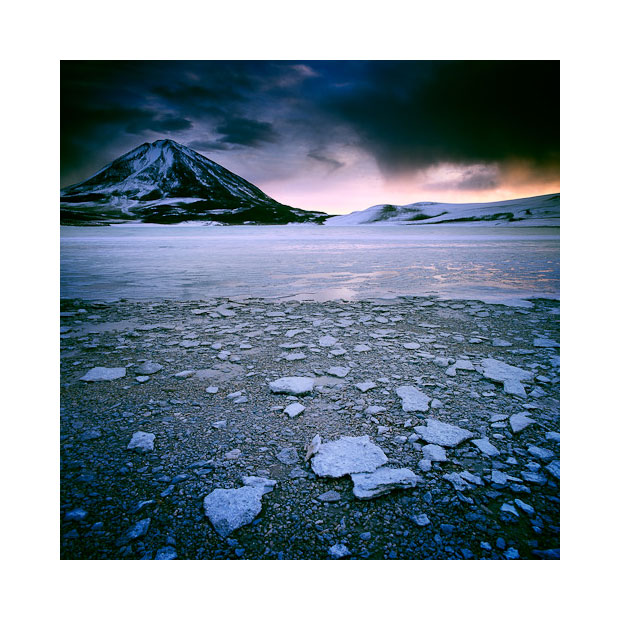
My second point, about being aware of foreground subject matter meant that I kept searching for a better composition. I like to think of this as re-interpreting the landscape.
I believe that doing landscape photography is about having a conversation with our surroundings. When we alter composition, we are effectively asking a new question. How we feel about this new composition is our answer. Making landscape images is a dialog between ourselves and how we feel about our environment. As I said earlier on in this post, I feel that photography is really a vehicle, one that allows us to enquire, to engage and go ask questions. We are ultimately searchers.
Colour as a Unifying Theme
Over the years, as my own photographic 'style' has been changing, I've had the good fortune to be in a position where I spend a lot of time 'noticing' the changes. This is perhaps one of the benefits of being a photographic workshop leader. In order to convey a message, and illustrate things, I've had to look at my own work and get to know myself a bit better as a result.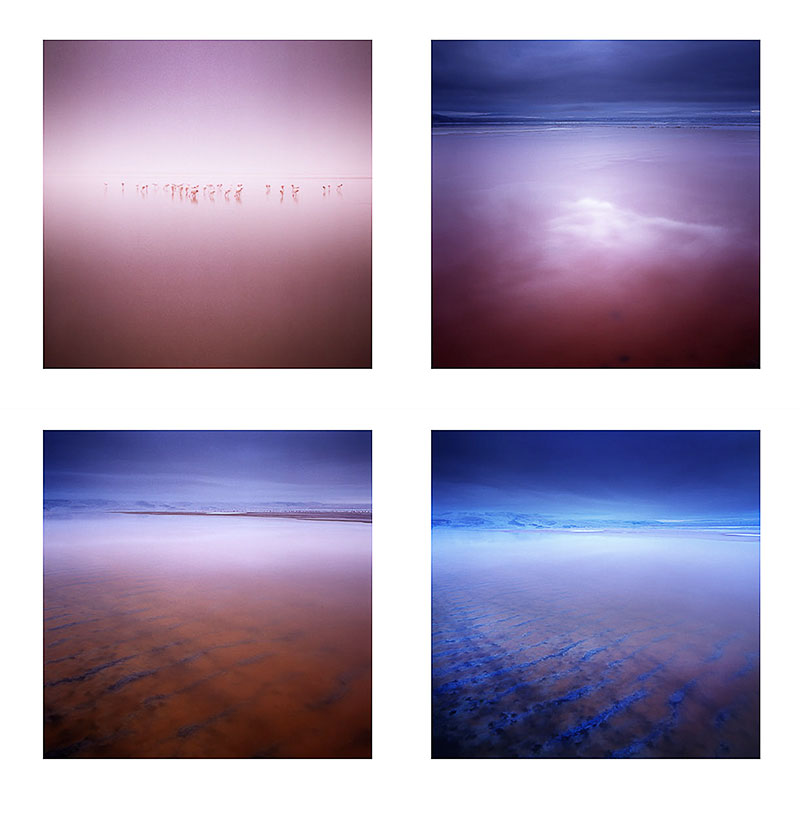
I wrote a nice little e-book about 'self-awareness' a while back, because I think that in order to grow as an artist, we need to become more aware of how we react to our environment. we need to get to know our moods and responses, as this will allow us to understand ourselves better.
One aspect of making good photographs, that I think is seldom discussed, is that of using colour as a theme. We are often very absorbed by the idea of composition in terms of form only, that I believe we spend very little time considering how colour may affect our style. Or more importantly, how colour can be utilised as a theme to bring a body of work together - and make it stronger than the sum of its parts.
I've noticed in my own work, over the past couple of years, that the colour palette of a location figures largely in influencing what I choose to shoot. I think this all began in 2011 when I first visited the black volcanic beaches of Iceland. In venturing here, I discovered that I could shoot monochromatic scenes with colour film, but also, that the final work had more unity because the colours and tones present in the work were similar.
Certainly, being presented with the reduced monochromatic colour palette of black sand and white ice, should have spelled out for me the direction where the work might go. But I'm not so convinced that most of us observe colour in this way, during the making of images on location (back to my point about developing a sense of self-awareness).
My impressions of the trip just after getting home, was that it had been a complete failure. My head had been so full of the cold that I came home thinking I'd gotten nothing out of the trip. The epiphany happened once I got my films back from the lab. It was only upon viewing the processed transparencies that I saw unity in the reduced colour palette. I saw a way forward and I consciously decided to run with it.
I think there's an opportunity in every place we go to make photographs, to notice colour as a potential theme to the work. This is also true whilst editing the work afterwards. it should be possible to notice that perhaps a handful of the images go together more strongly than others - all because they have a similar colour 'feel' to them.
Utilising colour in this way, is now pretty much at the heart of my photography.
I tend to hone right in on those particular images that have a strong colour aesthetic. I will look through the entire shoot to see if I have others that fall in-line with this mood, or usually, it comes about naturally as I build up a body of work. Some of the images relate to each other more, because there is a strong colour relationship between them.
I will even, after collecting many completed images, distill them down to those that have a strong colour relationship, because it has become a 'signature' - a unifying theme to the whole portfolio.
I don't expect others to be as literal with colour as I am. But I do feel that being more aware of colour relationships as a unifying theme that goes right through a body of work is beneficial.
Composition of an image does not just end at where we place objects within the frame, object placement is only really one dimension. Colour adds an additional dimension.
Just like black and white photographers will often tone a collection of images so that they have a similar feel, colour photographers should consider utilising the same approach in their work. If it brings forward a direction in which one wishes to explore further, then that's a good thing.
September's here again....
Possibly my most favourite month. I'm not sure why. Perhaps it's because of the equinox. I can feel the nights getting shorter already as summer turns into winter. It's a special time.
I think that being aware of the seasons as they change, is really fundamental to being a landscape photographer.
Music is by David Sylvian.
https://www.youtube.com/watch?v=op4UHbillk4&width=400
Desert Siloli, Bolivia
The desert Siloli, is a fascinating landscape situated at an elevation of around 4,500 metres on the Bolivian altiplano. I've been to this place a few times now, but I've never seen it quite like this before.
As part of my Bolivian photographic tour that I conducted here in June of this year, we were supposed to go to see the stone tree - el arbol de piedra. It is situated in the heart of the Siloli desert. A place that I had ear-marked for some more image making for (hopefully) a forth-coming book.
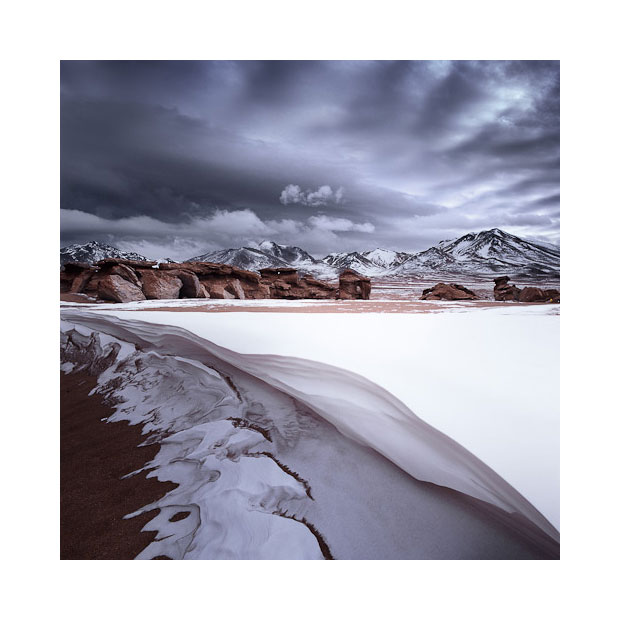
But the weather this summer was very unusual. June is the time of the dry season, and so there shouldn't be any snowfall at this period in the year. Only it snowed a lot, and I hear it is still snowing - right down the lower elevations of San Pedro de Atacama - apparently the first time it has snowed at this low elevation in 17 years.
I always find it very interesting to note how I build up an anticipation of what I will be shooting - a form of pre-visualisation if you like. It's not something I welcome, as I feel the sense of expectation can get in the way of taking on board what is actually presented to me. In the case of the Siloli desert, I had not anticipated snow there. Nor had I imagined that I would only be allowed 1 hour here due to the weather deteriorating. It would perhaps not surprise you to learn that we spent a cold evening in a hotel with no running water and a snow blizzard outside the door. We were concerned that we may not make it out the next day, despite having two land cruisers at our disposal (we did make it out the next day, although it took a bit longer than we'd imagined).
It was interesting to note the mood of the participants on the trip. Some took the downturn in the weather conditions well, while I could feel morale slip a bit for others. One participant in particular said 'it's part of the deal, part of the adventure'. Something I was very happy to hear. It is the right attitude one should have as a photographer.
Photography should be surprising. We're not in it for an easy ride, and part of the reason we make photographs, is to put us out there in the world so we can engage, and experience life in a way that we wouldn't if we hadn't taken up photography in the first place.
So I thought I would share this image with you. The sky by the way was really like this. We commented at the time that it had an HDR look (of the badly processed variety) about it. I thought it looked surreal.
Silver grey tones abounded the landscape as I ran from one spot to another with my Hasselblad film camera. This is perhaps one of the more memorable shots I made. Being a film shooter, I tend to remember some shots more than others - if it's got something about it - I tend to remember it. I like this fact about film photography - it taught me how to listen to my own feelings and tune in more to my responses to the landscape and use it to gauge the worthiness of what I am shooting.
My new images from the Chilean Atacama, and the Bolivian altiplano are up in my new section of this web site.
Hardbound & Electronic Bound
I'm a big proponent of the hardback book. So much so, that I've released two hard back's in the past three years: 'The art of adventure, 40 Photographic Examples', and also 'Iceland, a journal of nocturnes'. Both were printed to a very high standard, and are roughly about Album size. But I've been thinking for a while now, that we live in a multi-format society. We tend to like to access what we own, when we want to. We like the convenience of having our books and music available to us wherever we are.
So what I've decided to do, is offer both my hardback books with a bundled PDF version. I figure that most folks who want to buy the book, would also like to be able to carry around with them an electronic version of it on their iPad or similar device. I still believe that the books should be bought as hardbacks, so I'm afraid that the PDF versions will not be available for sale separately. If this is bad news for you - then maybe you can look at it as buying an e-book and getting a hard-back version of it as a bonus ;-)
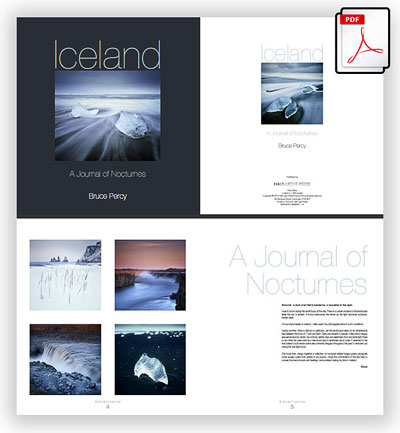
So I'm very pleased to announce that both my books now come with a PDF version along side it as part of the purchase. I'm also additionally pleased to let you know that if you already purchased a copy of one of these books from my site already, we have just sent an email to you with a link to download the PDF version for free.
You can purchase the books here.

